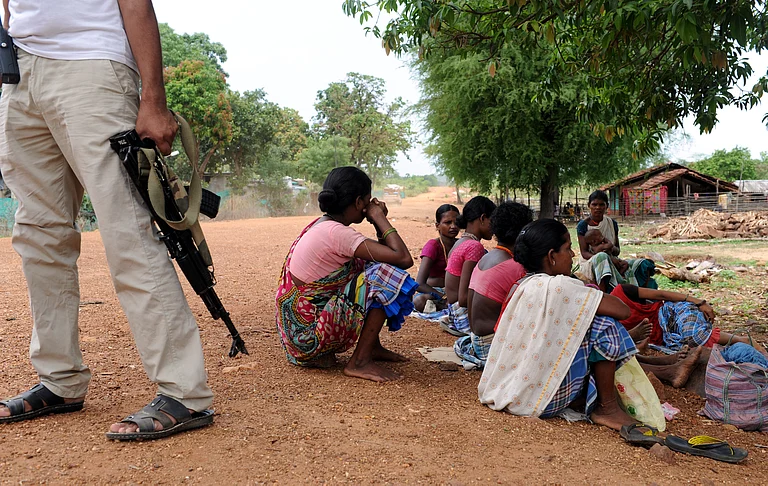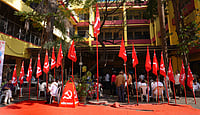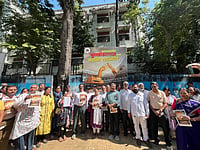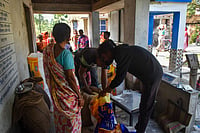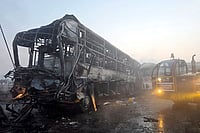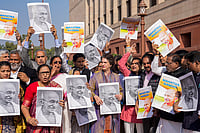
Banjaras are currently holding rallies across Maharashtra for their inclusion in ST quota
Banjaras cites ‘Hyderabad Gazette’ a recognised record by the Maharashtra state recently in Maratha’s reservation demand from OBC quota
Tribals across the state are protesting Banjara's demands with massive rallies.
Maharashtra is witnessing a wave of rallies over reservation demands. The movement began with protests led by Manoj Jarange-Patil, calling for reservation for the Maratha community. After his latest rally in Mumbai, the government indicated willingness to recognise Marathas as part of the Kunbi caste, according to the Hyderabad Gazette.
Soon after, the Banjara community began holding large rallies across several districts, demanding reservation under the Scheduled Tribe (ST) category. Tribal communities, in turn, have been organising massive protests opposing the Banjaras’ demand.
On October 15, tribals in Gadchiroli district held a major protest against the Banjaras’ demand. Like the Marathas, Banjaras are now seeking recognition under the Hyderabad Gazette and inclusion in the ST category for reservation benefits. However, Adivasi communities have strongly opposed this move.
To understand both the Banjaras’ demand and the Adivasis’ resistance to it, Outlook spoke in depth with people from both groups.
“Although the media is now paying a lot of attention to the Banjaras’ demand for reservation; this demand is not new. The Banjaras have faced immense exploitation. Historically, our community has always lived on the margins, placed at the very bottom of the caste hierarchy. Our language, culture, food, and lifestyle are similar to tribals across regions. So, even though we have been classified in different categories in various states, we now deserve to be included in the Scheduled Tribe (ST) category,” says Dr Veera Rathod, a Sahitya Akademi award-winning writer, poet, and scholar from the Banjara community.
Presently, The Banjaras fall under the Vimukta Jati–Nomadic Tribes (VJNT) category in Maharashtra, which provides 3 per cent reservation. However, in other parts of India, Banjaras are classified differently — as STs in Andhra Pradesh, SCs in Karnataka, and OBCs in the central reservation list.
“Various anthropological studies and even the Hyderabad Gazette describe Lamans, Lambadas, and Banjaras as tribes sharing close affinities with Adivasis,” Dr Rathod explains. “That is precisely why we are invoking the Hyderabad Gazette. After the linguistic reorganization of states, Maharashtra should have forwarded these records related to the Banjaras to the central government — but it failed to do so. This historical injustice must now be corrected,” Rathod told Outlook.
The Banjara community is believed to have originated in the Marwar region of Rajasthan. Some scholars trace their roots to Rajput clans who migrated and spread across India through their involvement in trade and transportation. Other anthropologists, however, associate them with Dravidian-origin nomadic groups. Historically, the Banjaras played a vital role as transporters of goods such as grain, salt, and livestock along ancient trade routes. During the British era, they were classified as a ‘Criminal Tribe’ under the Criminal Tribes Act of 1871, which led to systemic exploitation and the loss of their social dignity.
The language of the Banjaras is known as Gormati, Lambadi, or Lamani — a blend of Hindi, Marathi, Rajasthani, and Telugu. Banjara women are known for their rich tradition of folk songs, storytelling, and the famous Lambadi dance. Their traditional attire features intricate embroidery, mirror work, and silver jewelry. The community worships Pohradevi which is its most sacred pilgrimage site and holds Saint Sevalal Maharaj in great spiritual esteem.
Like many other communities, the Banjaras have a patriarchal social structure, yet women play a central role in the family’s economic and cultural life. Historical marginalisation, migration, and poverty have kept literacy levels low, although access to education and representation in government jobs has improved slightly in some regions over the past two decades. Among women, literacy remains particularly low, and health challenges are significant.
Traditionally, the Banjaras relied on transport and trade. The introduction of the railway network during British rule undermined this livelihood, forcing many to take up manual labour, agriculture, and cattle herding.
The current economic situation of the Banjara community is not uniform. Most Banjaras live as semi-nomadic, while many settled in rural areas face poverty and limited livelihood options. Many work as agricultural labourers or in construction. Traditionally, Banjara women have contributed significantly to the household economy through pottery, embroidery, jewellery-making, and assisting in trade.
In Maharashtra, the community has a strong presence in Nanded, Latur, Dharashiv, Parbhani, Solapur, and Satara districts. In recent years, a few Banjara leaders have become active in Maharashtra’s politics, though women’s leadership remains limited. After 1952, the Banjaras were denotified from the “Criminal Tribes” list and recognised as Denotified Tribes (DNT). However, caste-based atrocities against Banjaras continue to take place across many parts of Maharashtra.
Vishal Rathod, a young researcher in IIT Gandhinagar who belongs to the banjara community, shares a different perspective. “Getting reservation under the Scheduled Tribe (ST) category might indeed help the Banjaras progress to some extent,” he says, “but there is also a contradiction within this demand. On one hand, the Banjara community has gradually become intertwined with Hindu Brahminical and Vedic traditions, and on the other hand, to now seek recognition as an Adivasi raises questions that need serious reflection.” According to him, rather than focusing solely on ST reservation, the government should prioritize free education, healthcare, and skill-building initiatives for the community’s holistic development. He also suggests that the Banjara community must not fall prey to the cultural Hinduisation agenda of right-wing forces.
Meanwhile, the ongoing protests across Maharashtra against the Banjaras’ demand for inclusion in the ST category have seen significant participation from Adivasi youth. Outlook covered one such rally in Nandurbar, a predominantly Adivasi district. When asked, Why the Banjaras, being a marginalized group themselves, don’t deserve reservation?Waharu Sonawane, a senior activist and writer from the Adivasi Ekta Manch, said: “Every community has the right to struggle for its development. However, if the Banjaras seek ST reservation, it would amount to injustice against the Adivasis. If Banjaras struggle for reservation without touching upon ST quota, we will support them.”
Dr Sanjay Dabhade, a Maharashtra member of the Adivasi Adhikar Manch and a researcher on reservation policies, has been actively participating in Adivasi rallies across various districts, presenting the community’s perspective. According to Dr Dabhade the Banjaras cannot be classified as Adivasis since they were historically traders of salt and grain, not indigenous forest-dwelling groups. He further points out that the Hyderabad Gazetteer, which the Banjaras are citing to justify their demand for inclusion in the ST category, contains a reference stating that the community considers itself to be descendants of Brahmins and Rajputs. This, he argues, contradicts their claim of tribal identity.
Meanwhile, although leaders from both communities have been actively participating in their respective rallies, the Maharashtra state government has yet to take any concrete step on the issue.









